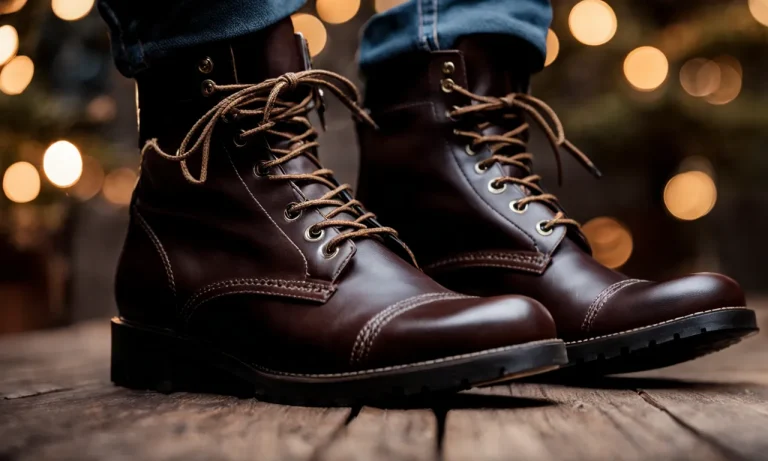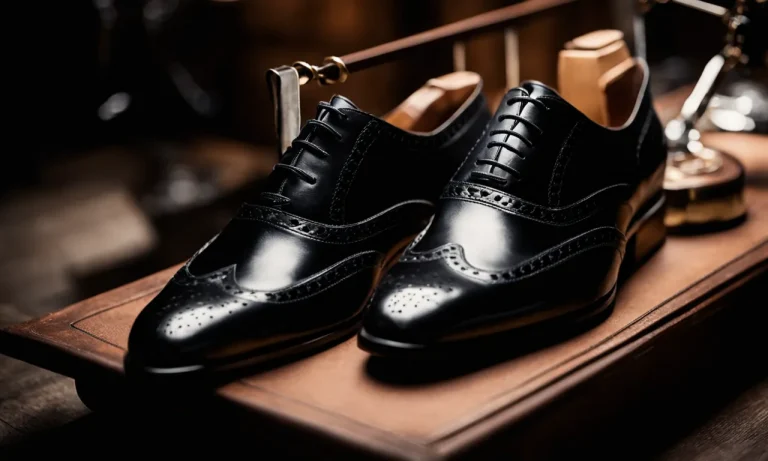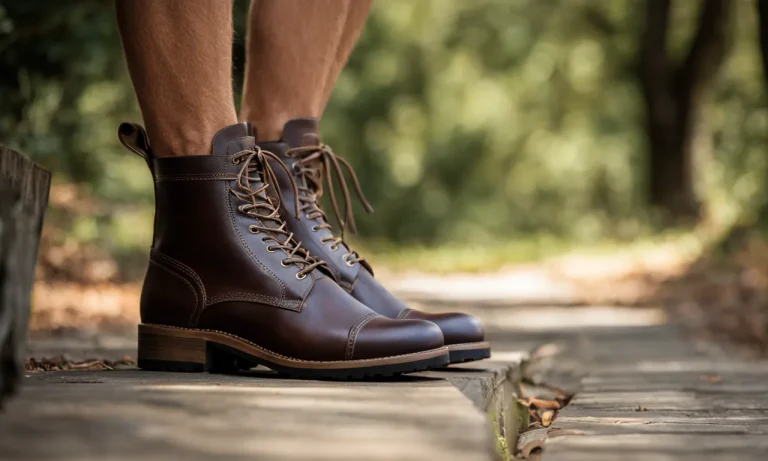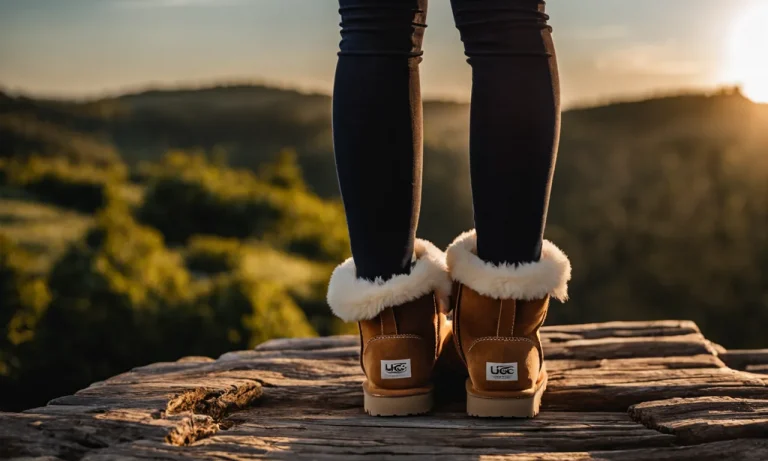Whether you’re looking to invest in a durable pair of leather boots or wondering how long your current boots will hold up, you’ve come to the right place. The lifespan of leather boots depends on several factors, but with proper care and maintenance, a quality pair can last for years.
If you’re short on time, here’s a quick answer to your question: With regular wear and proper care, most leather boots will last 2-5 years or more before needing to be resoled or replaced.
What Impacts the Longevity of Leather Boots
When it comes to the longevity of leather boots, several factors come into play. Understanding these factors can help you make informed decisions when purchasing and caring for your boots. Here are some key aspects that can impact the lifespan of your leather boots:
Leather Type and Quality
The type and quality of leather used in the construction of boots play a significant role in their durability. Full-grain leather, for example, is known for its exceptional strength and resistance to wear and tear.
It is considered the highest quality leather and can withstand heavy use and adverse weather conditions. On the other hand, top-grain leather and genuine leather, while still of good quality, may not be as durable as full-grain leather.
It’s essential to choose boots made from high-quality leather to ensure longevity.
Construction and Craftsmanship
The way the boots are constructed and the level of craftsmanship involved also affect their lifespan. Well-constructed boots with reinforced stitching and sturdy soles are more likely to withstand daily wear and tear.
Pay attention to details such as double or triple stitching, as this can indicate better durability. Additionally, boots made by experienced and skilled craftsmen tend to have superior quality and longevity.
Fit and Sizing
The fit and sizing of your boots can impact their lifespan. Boots that are too tight or too loose can cause discomfort and lead to premature wear and tear. It’s important to choose the right size and ensure a proper fit.
This will not only enhance your comfort but also prevent unnecessary strain on the leather, prolonging the lifespan of your boots.
Care and Maintenance
Proper care and maintenance are crucial for extending the lifespan of leather boots. Regularly cleaning and conditioning your boots will help keep the leather supple and prevent it from drying out or cracking.
Additionally, protecting your boots from excessive moisture and extreme temperatures can help maintain their integrity. It’s also advisable to invest in quality shoe care products and follow the manufacturer’s recommendations for maintenance.
By considering these factors and taking appropriate measures to care for your leather boots, you can enhance their longevity and enjoy them for years to come.
Typical Lifespan of Different Leather Boots
When investing in a pair of leather boots, it’s important to consider their lifespan. How long your boots will last depends on various factors such as the quality of the leather, construction, and how well you maintain them.
Here’s a comprehensive guide to the typical lifespan of different types of leather boots.
Dress Boots – 3-5 Years
Dress boots are often made with high-quality leather and are designed for formal occasions. With proper care, dress boots can last anywhere from 3 to 5 years. It’s important to regularly clean and condition these boots to keep the leather supple and prevent cracking.
Additionally, avoid wearing dress boots in extreme weather conditions that could damage the leather.
Work & Hiking Boots – 5-7 Years
Work boots and hiking boots are generally built to withstand tough conditions and provide ample support. These boots are made with durable leather and sturdy construction, allowing them to last between 5 to 7 years with proper care.
Regular cleaning, conditioning, and re-soleing when necessary can help extend the lifespan of these boots. It’s also important to avoid exposing them to harsh chemicals or excessive heat.
Motorcycle & Riding Boots – 2-4 Years
Motorcycle and riding boots are subjected to intense wear and tear due to their specific purpose. These boots often feature reinforced areas and protective elements to provide safety while riding. However, due to their exposure to harsh conditions and frequent use, their lifespan typically ranges from 2 to 4 years.
Regular maintenance, including cleaning, conditioning, and repairing any damage, can help prolong their lifespan.
It’s important to note that these are general guidelines, and individual factors such as frequency of use, terrain, and care practices will ultimately determine the lifespan of your leather boots. Taking proper care of your boots, including regular cleaning, conditioning, and storing them in a cool, dry place, will help ensure they last as long as possible.
For more information on caring for leather boots and extending their lifespan, you can visit reputable websites such as shoecaresupplies.com or bootmoodfoot.com.
Signs Your Boots Need Repair or Replacement
Leather boots are a timeless and durable footwear option that can last for many years with proper care. However, even the highest quality boots will eventually show signs of wear and tear. Knowing when it’s time to repair or replace your leather boots is essential to ensure they continue to provide the comfort and protection you need.
Here are some common signs to look out for:
Worn Out Soles
The soles of your boots are subjected to constant pressure and friction with every step you take. Over time, the soles can become worn out, resulting in decreased traction and stability. If you notice that the tread on your boots has worn down significantly, it’s a clear indication that they need attention.
Walking on slippery surfaces with worn-out soles can be dangerous and increase the risk of accidents. It’s important to have the soles replaced or repaired to maintain your boots’ functionality and safety.
Cracked or Damaged Leather
Leather is a natural material that can develop cracks or damage over time, especially if not properly cared for. Exposure to harsh elements like extreme heat, cold, or excessive moisture can accelerate the deterioration process.
Inspect your boots regularly for any signs of cracks, scratches, or tears in the leather. Small cracks can often be repaired, but extensive damage may require replacing the boots altogether. Remember, proper conditioning and regular cleaning can help extend the lifespan of the leather and prevent such issues.
Loose Stitching
Stitching plays a crucial role in holding your boots together and maintaining their structural integrity. Over time, the stitching can become loose or even break, resulting in weakened areas of your boots.
If you notice any loose threads or stitches coming undone, it’s a sign that the boots need repair. Ignoring this issue can lead to further damage and potential separation of the leather panels. Taking the boots to a professional cobbler for re-stitching can help restore their strength and ensure they last longer.
Distorted Shape
Leather boots are designed to conform to the shape of your feet over time, providing a comfortable and customized fit. However, if you notice that your boots have started to lose their original shape or have become excessively stretched out, it’s a sign that they may need replacement.
A distorted shape can affect the boots’ support and fit, compromising their overall performance. In some cases, a cobbler may be able to reshape the boots, but if the distortion is severe, it may be more cost-effective to invest in a new pair.
Remember, the lifespan of your leather boots will depend on various factors, including the quality of the materials, frequency of use, and maintenance routine. Regularly inspecting your boots for these signs of wear and tear will help you determine when it’s time for repair or replacement.
Taking care of your leather boots not only ensures their longevity but also enhances your overall footwear experience.
Tips for Making Your Boots Last
Rotate Boots Regularly
One of the key ways to make your leather boots last longer is to rotate them regularly. Wearing the same pair of boots every day can lead to excessive wear and tear, resulting in a shorter lifespan. By rotating your boots and giving them a break between uses, you allow them to rest and recover, ensuring that they remain in good condition for a longer period.
Plus, rotating your boots also allows you to showcase your shoe collection and switch up your style effortlessly!
Use Shoe Trees When Storing
Proper storage is essential for maintaining the shape and condition of your leather boots. When not in use, it is recommended to use shoe trees to help preserve their shape. Shoe trees are specifically designed to mimic the natural shape of a foot, preventing the leather from creasing and cracking.
They also help to absorb moisture and odors, keeping your boots fresh and ready for your next adventure. Don’t forget to insert shoe trees after wearing your boots, and you’ll be amazed at how they retain their original form.
Clean and Condition Leather
Regular cleaning and conditioning are crucial for extending the lifespan of your leather boots. Dirt, dust, and grime can accumulate on the surface of the leather, leading to discoloration and deterioration over time.
To clean your boots, gently wipe them with a damp cloth or use a specialized leather cleaner. Once cleaned, apply a leather conditioner to nourish and moisturize the leather, preventing it from drying out and cracking.
This simple routine will not only keep your boots looking great but also enhance their durability.
Apply Protectants
To shield your leather boots from the elements, it’s a good idea to apply a protectant. Protectants create a barrier between the leather and potential hazards such as water, stains, and UV rays. They help to repel water, preventing it from seeping into the leather and causing damage.
Additionally, protectants can help guard against scuffs and scratches, keeping your boots looking their best. Look for high-quality protectants specifically formulated for leather and follow the instructions for optimal results.
Resole When Needed
Over time, the soles of your leather boots will inevitably wear down. When you notice signs of significant wear, such as thinning treads or a lack of traction, it’s time to consider resoling your boots.
Resoling involves replacing the worn-out sole with a new one, effectively extending the life of your boots. It’s best to have this done by a professional cobbler who can assess the condition of the boots and provide the appropriate repair.
Regular resoling can significantly prolong the lifespan of your beloved leather boots.
By following these tips, you can ensure that your leather boots last for years to come. Remember, proper care and maintenance are key to preserving the quality and longevity of your favorite pair. So go ahead, invest in a good pair of leather boots, and enjoy many stylish adventures with them!
Conclusion
With proper selection, care and maintenance, a quality pair of leather boots can last for many years. Investing in boots made with durable leathers, sturdy construction and the right fit for your feet will go a long way in maximizing longevity.
Don’t forget to regularly clean, condition and protect the leather, and resole your boots whenever the soles start wearing out. Follow these tips, and your boots will deliver reliable performance, season after season.






